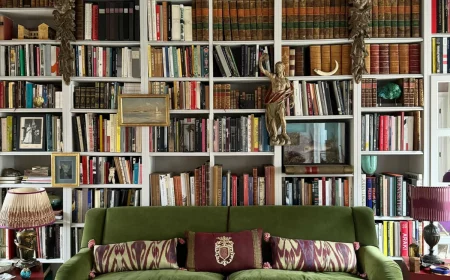Your Bedroom Isn’t Just a Room—It’s Your Sanctuary. Let’s Make It Feel Like One.
I’ve been in the interior design world for a long time, and if there’s one thing I’ve learned, it’s that the bedroom is the most sacred space in a home. It’s not a showroom for your friends; it’s your personal reset button. So many people get hung up on a trendy paint color or a cool headboard, but a bedroom that truly works is built on a foundation of pure function and comfort. It’s all about how that space makes you feel day in and day out.
In this article
I’ll never forget one of my early projects. The clients had this huge, beautiful bedroom, but they confessed they never felt truly relaxed in it. Turns out, their bed was smack in the middle of the main traffic path from the door to the bathroom, and the only light was a single, harsh overhead fixture. It was technically decorated, but it was failing at its one job: being a place of rest. Just by rethinking the layout and layering the lighting, we completely transformed the vibe.
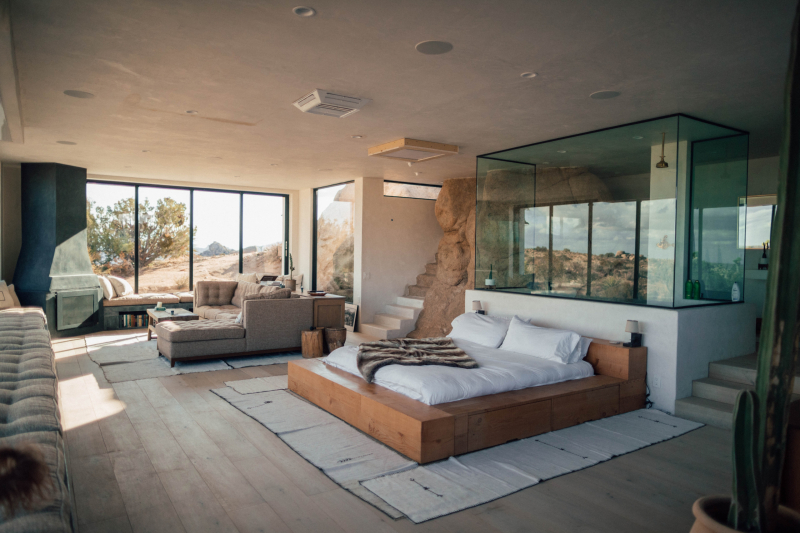
That project drove home a lesson I live by: Great design starts with the bones of a room, not just the pretty stuff you put in it. So, let’s walk through how to build a bedroom that feels just as amazing as it looks.
1. The Canvas: Getting Your Walls and Ceiling Right
Think of your walls and ceiling as the container for your sanctuary. Get them right, and everything else just clicks into place. It’s tempting to just grab a color you love, but the pros think about the physics of light first. This is where a little spec called Light Reflectance Value, or LRV, is your secret weapon.
Every paint color has an LRV score from 0 (pure black) to 100 (pure white), and it tells you exactly how much light that color will bounce around the room. A high LRV (say, above 70) makes a room feel brighter and more expansive. A low LRV (down around 20) will absorb light, creating a darker, cozier, and more intimate atmosphere. For most bedrooms, I find the sweet spot is an LRV between 50 and 65. It’s a calming backdrop that isn’t too stark or too shadowy.
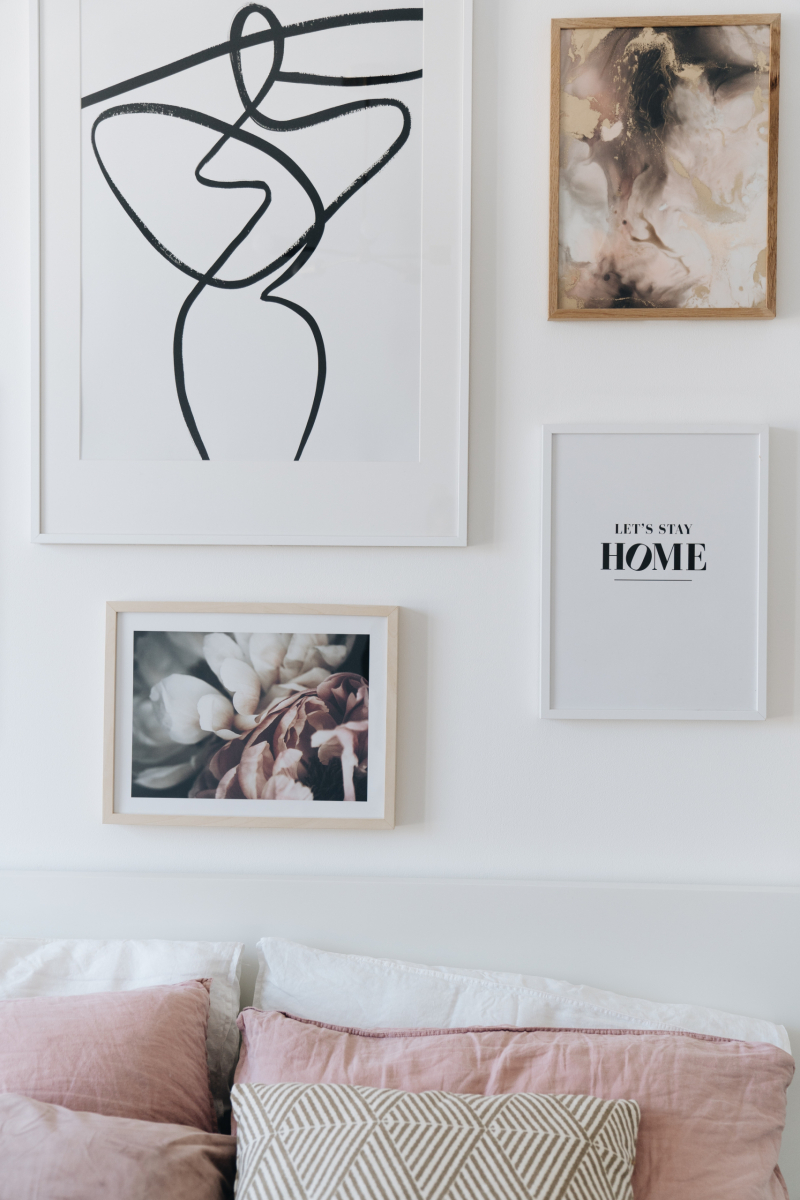
Good to know: You can find the LRV on the back of the paint chip or on the manufacturer’s website. If you’re wondering what that looks like in the real world, some super popular choices in this range are the go-to neutrals you see everywhere, like colors similar to Sherwin-Williams’ ‘Agreeable Gray’ or Benjamin Moore’s ‘Revere Pewter’.
Let’s Talk Paint Finish (It Matters!)
The sheen of your paint is just as crucial as the color. Here’s a quick rundown of what to use where:
- Matte (or Flat): This finish has zero shine, which makes it a rockstar at hiding little bumps and imperfections on your walls. The trade-off? It’s not very durable and scuffs easily. I usually stick to using matte on ceilings or in very low-traffic adult bedrooms.
- Eggshell: This is my go-to for 90% of bedroom walls. It has a tiny bit of soft sheen (like, you guessed it, an eggshell) and offers a great balance of durability and a velvety look. It’s much easier to wipe clean than matte.
- Satin: A step up in gloss from eggshell, satin is even more durable and wipeable. It’s perfect for trim, windowsills, and doors—all the spots that get more abuse. Honestly, for a kid’s room, using satin on the walls is a smart, practical move.
Quick Tip: Don’t Forget the ‘Fifth Wall’
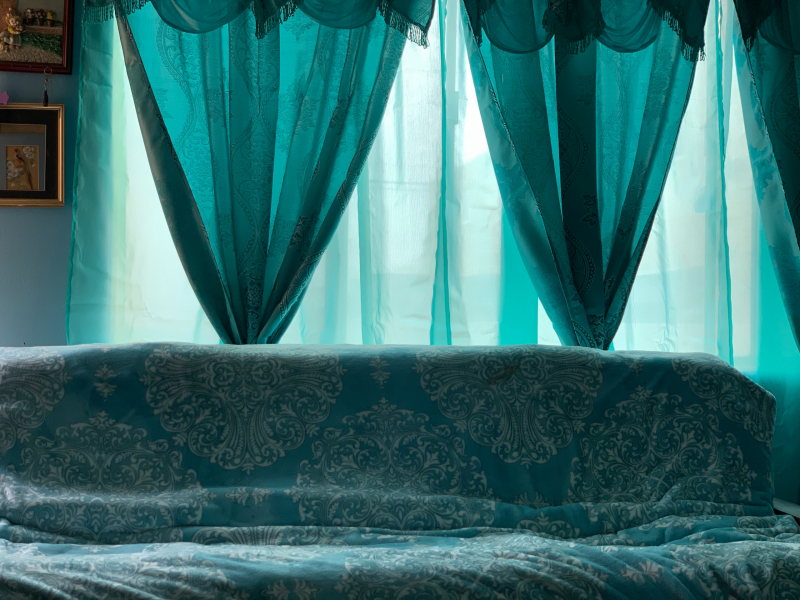
Your ceiling! Painting it builder-grade stark white can create a harsh line that makes the room feel a bit disconnected. A simple trick the pros use is to paint the ceiling with the same color as the walls, but mixed at 50% strength. Or, just pick a color that’s two shades lighter on the same paint strip. It’s a subtle change that makes the entire room feel more cohesive and intentionally designed.
Prep Work is Everything
A great paint job is really 90% prep. Before you even think about opening a can of paint (which, for a quality gallon, will probably run you between $50 and $80), wipe down your walls with a bit of mild soap and water. Fill any holes with spackle, sand ’em smooth, and make sure the room is well-ventilated. Even with today’s low-VOC paints, you need fresh air. Trust me, I’ve seen people try to paint in a sealed room and end up with a massive headache. Safety first!
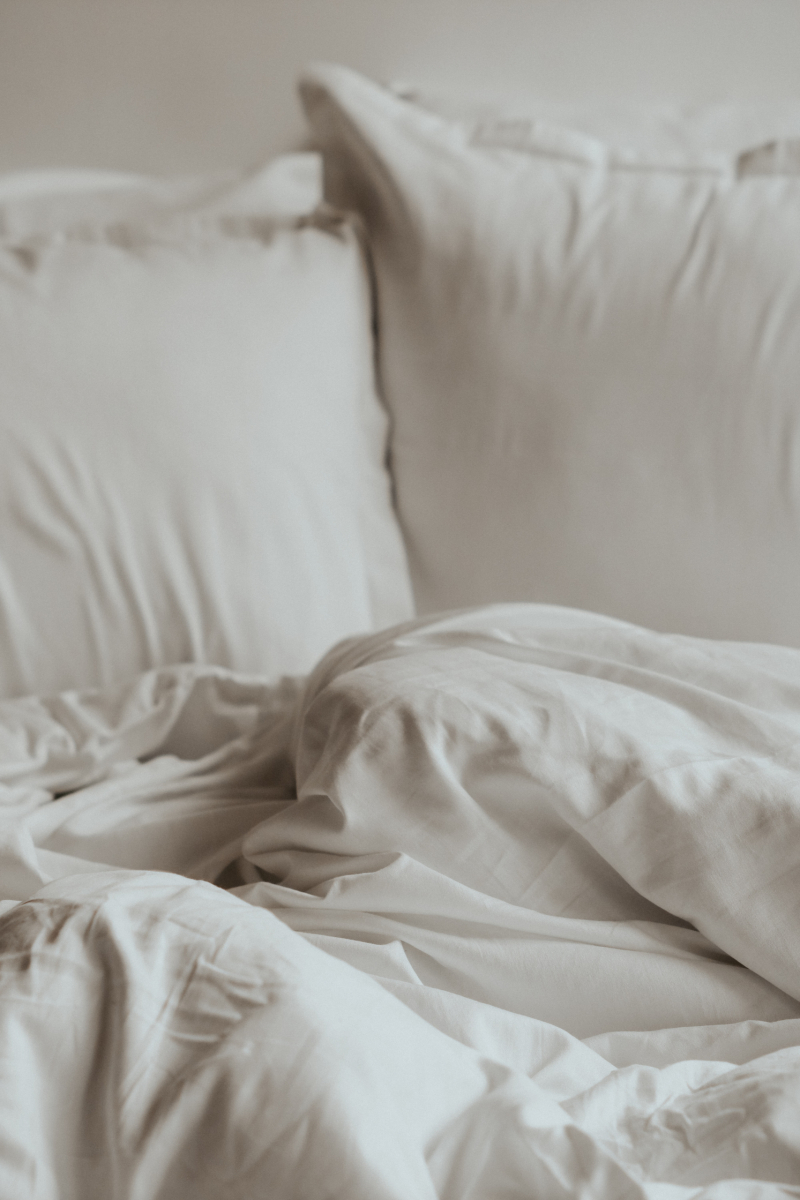
2. Mastering Light & Privacy with Window Treatments
Windows are the soul of a room. How you dress them controls light, privacy, and even your heating bill. The best approach, hands down, is layering.
A fantastic combo is pairing sheer curtains with blackout drapes. The sheers give you privacy during the day while still letting in that beautiful, soft, diffused light. Then, at night, you can pull the blackout drapes for total darkness. It’s a flexible system that adapts to your needs. A good blackout panel might cost you $50-$100, and a sheer panel could be $30-$60, but it’s an investment that pays off in comfort and energy efficiency.
A Little Hanging Trick That Changes Everything
Here’s a secret that makes any room look more expensive: hang your curtains high and wide.
- Go High: Mount the curtain rod about 4 to 6 inches above the window frame, not right on top of it. This draws the eye up and makes the ceiling feel taller.
- Go Wide: Extend the rod 3 to 6 inches past the frame on each side. This way, when the curtains are open, they rest on the wall, not over the glass, making your window look bigger and letting in more light.
It’s a small detail that has a massive impact. I see so many people cramp their windows with rods that are too low and narrow—don’t be one of them!
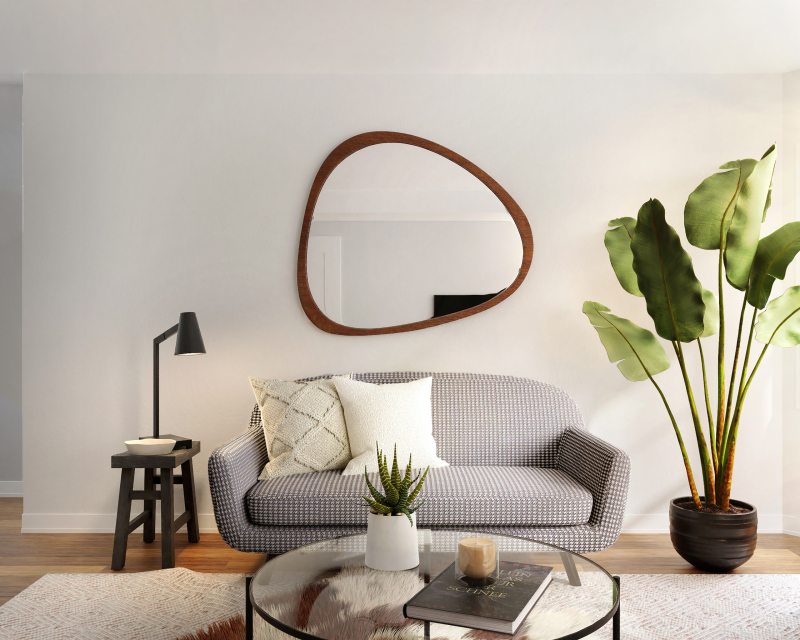
Material-wise, linen gives you that airy, relaxed vibe, while velvet is a heavyweight champ for insulation against both cold and noise. It’s a fantastic choice for older, drafty houses or if your bedroom faces a busy street.
3. The Main Event: Your Bed and Linens
The bed is the whole reason this room exists, so its comfort is non-negotiable. And let’s get one thing straight: thread count is mostly a marketing gimmick. The material and weave of the fabric matter so much more.
Decoding the Fabrics:
- Cotton Percale: Feels light, crisp, and cool, like your favorite button-down shirt. It’s super breathable, so it’s a dream for people who tend to sleep hot.
- Cotton Sateen: Has a silkier, smoother feel and a slight sheen. It’s a bit cozier and warmer than percale. Heads up, though: it can be more prone to snagging, especially if you have pets.
- Linen: Made from flax, linen is a powerhouse. It’s incredibly breathable and just gets softer and softer with every wash. It has a naturally rumpled look that’s part of its charm.
- Tencel (Lyocell): A modern fiber made from wood pulp. It’s buttery soft, smooth, and great at wicking away moisture. A fantastic option if you have sensitive skin.
You can find amazing options from brands like Brooklinen or Parachute that really focus on quality materials. Be wary of budget sheets claiming a 1000+ thread count; they often use thin, cheap fibers. A good 300-thread-count sheet from high-quality cotton will feel a world better and last for years. Expect to invest between $150 and $300 for a quality set, but it’s an investment in your sleep.
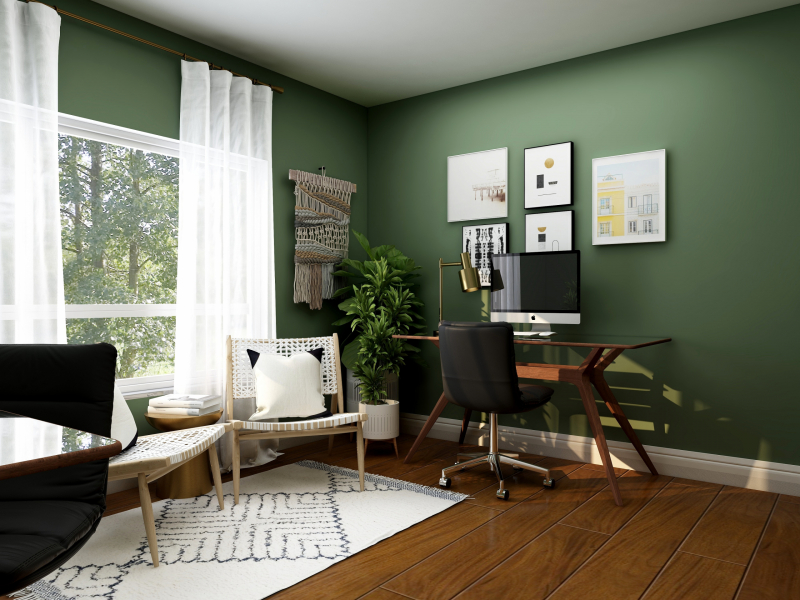
4. Smarter Layouts and Storage
A functional bedroom layout is all about creating clear, easy pathways. Before you buy a single piece of furniture, grab a tape measure. You can map things out with painter’s tape on the floor or use a free online tool like SketchUp Free or Floorplanner.com to avoid costly mistakes. (I once had a client buy a stunning armoire that was so big they couldn’t open their bedroom door. It ended up in the living room!)
Key Measurements to Live By:
- Main Pathways: Keep at least 36 inches of clear walking space from the door through the room.
- Around the Bed: You need at least 30 inches on the sides of the bed you walk on.
- In Front of Furniture: Leave 36 inches in front of dressers so you can actually open drawers and stand there.
Scale is also critical. A huge bed will swallow a small room, while a tiny nightstand will look silly next to a king-sized bed. For smaller rooms, think about floating nightstands to save floor space and a tall, narrow dresser to use vertical height. And by the way, a pack of furniture sliders from Home Depot is the best $10 you’ll ever spend when it comes to moving things around.
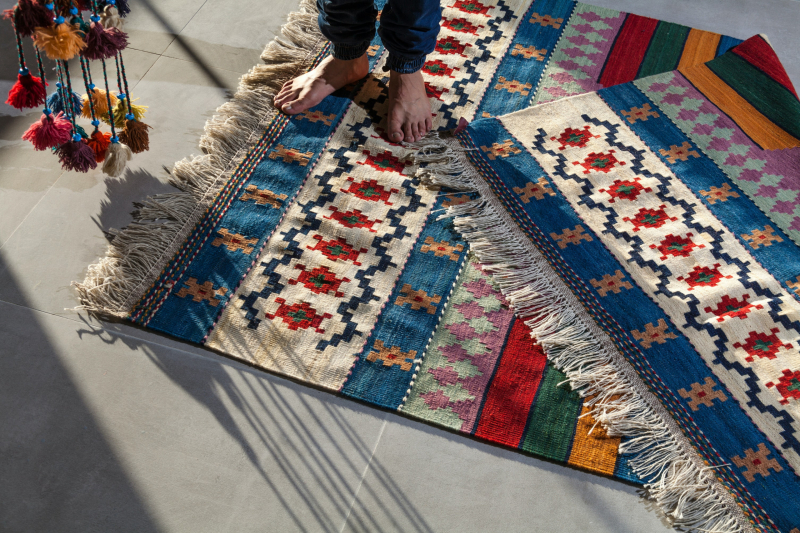
5. Grounding Your Space with a Rug
A rug is what pulls the whole room together. It adds texture, warmth, and defines the sleeping zone. The number one mistake people make? Buying a rug that’s way too small. It ends up looking like a sad little bathmat in the middle of the floor.
Simple Sizing Rules:
- For a Queen Bed: An 8×10 foot rug is almost always the right call.
- For a King Bed: You’ll want to go up to a 9×12 foot rug.
The goal is for your feet to hit a soft surface when you get out of bed. The rug should extend at least 18 inches on either side of the bed. As for cost, a durable 8×10 synthetic or jute rug might run you $200-$400, while a quality wool one is more of an investment, often starting around $500 and going up from there. Wool is incredibly durable and soft, but a synthetic is a great practical choice if you have kids or pets.
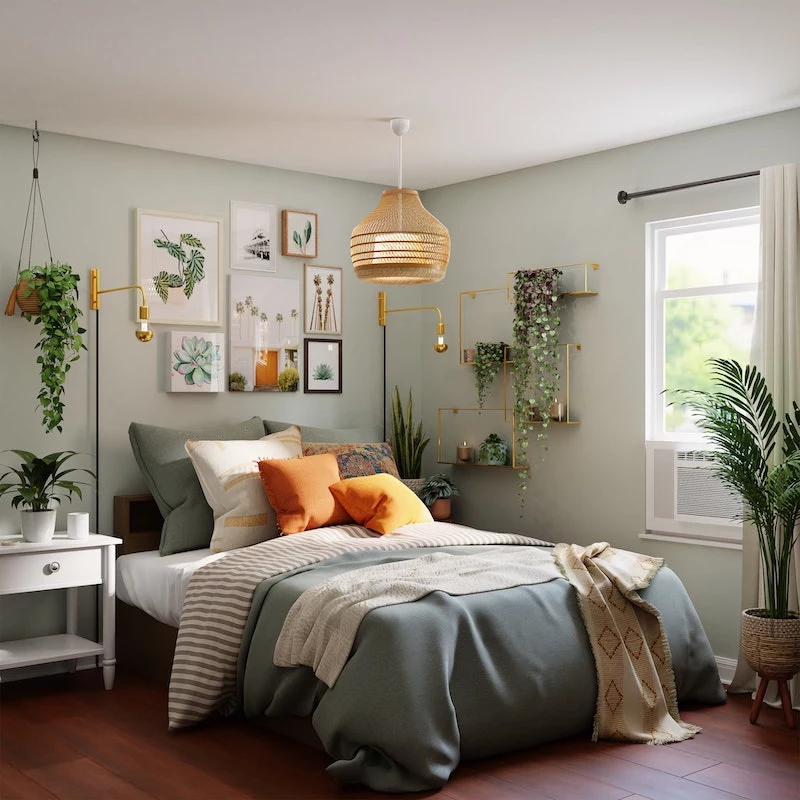
6. Setting the Mood with Layered Lighting
Lighting is a design superpower. A single overhead light is a mood-killer. You need layers!
- Ambient Light: This is your overall light, like a ceiling fixture. A dimmer switch on this is NON-NEGOTIABLE. It’s the key to taking your room from daytime-bright to evening-cozy.
- Task Light: This is for specific jobs, like a bedside lamp for reading or a floor lamp by a chair. Wall-mounted sconces are great for freeing up nightstand space.
- Accent Light: This is the ‘mood’ lighting, like a small spotlight on a piece of art.
Also, pay attention to your light bulbs! Look for a color temperature between 2700K and 3000K. This gives off a warm, cozy, yellowish light that’s relaxing and won’t mess with your sleep cycle. Anything over 4000K is a cool, bluish light that’s better for an office or a workshop.
A Critical Safety (and Sanity) Note:
Feeling overwhelmed? Here’s the one thing that will make the biggest difference for the least effort: Swap all your bedroom lightbulbs to that warm 2700K range and install a dimmer on your main light. A dimmer switch is a pretty simple DIY job if you’re comfortable turning off the power at the breaker and following instructions. However, if you need to install a new fixture or move any wiring, that is 100% a job for a licensed electrician. Do not take risks with electricity. It’s just not worth it.
7. The Final Layer: Making It Yours
This is the fun part—adding your personality. The key is to be intentional, not cluttered.
When you hang art, the most common mistake is hanging it way too high. The center of the artwork should be at eye level, which is roughly 57-60 inches from the floor. If it’s over a headboard or dresser, the bottom of the frame should be just 6-8 inches above the furniture. It connects the pieces visually.
Your bedroom should be filled with things that make you happy, but displayed with purpose. Instead of a pile of books, get a nice shelf. Instead of a bunch of souvenirs scattered on a dresser, group them together on a tray. A well-designed bedroom is a system where everything works together to help you rest and recharge. It’s an investment in your own peace of mind, and you absolutely deserve it.






